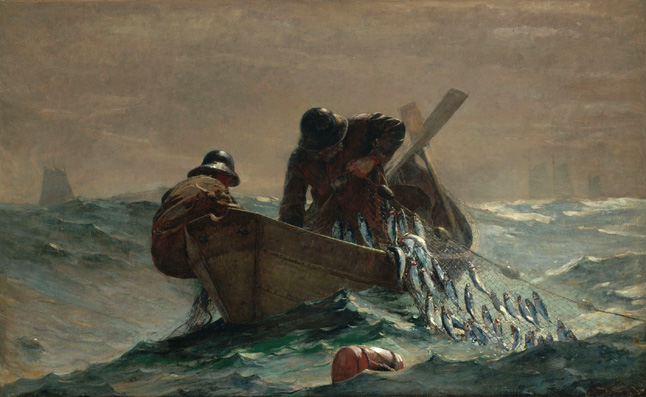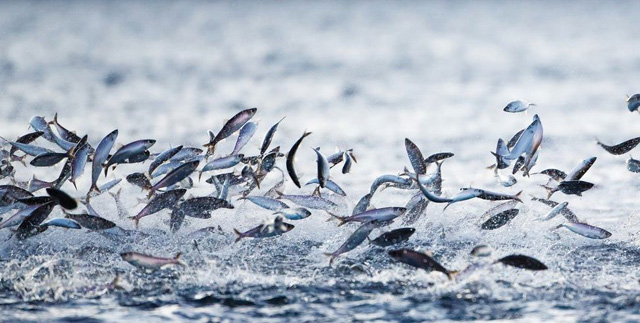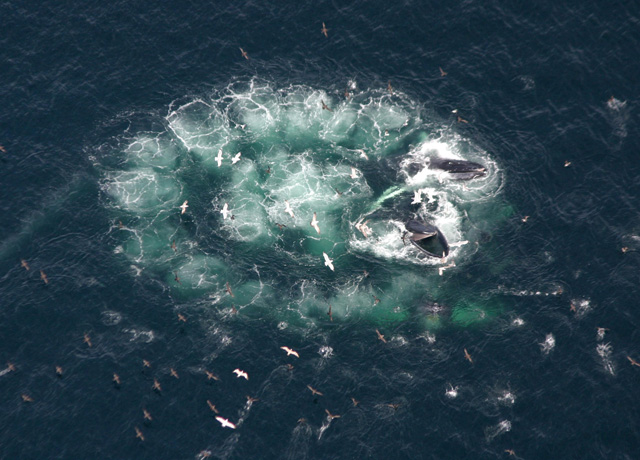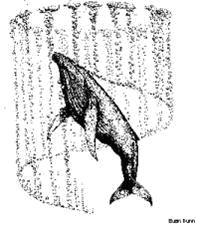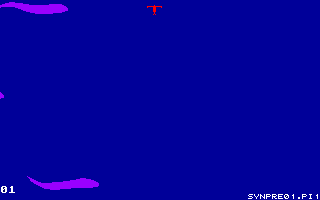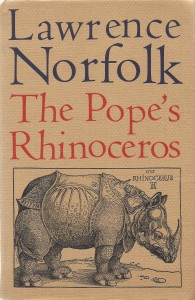The Herring Net by Winslow Homer via Wikimedia
In Winslow Homer’s The Herring Net you don’t see the mens’ faces, but their hats take on the wet sheen of fish. A beautiful passage of painting. And in all that thunderous sea attention is lavished on the cold reality of toiling humans in its midst.
Homer is among the great American painters. Look for his compassionate love of humans, his drama, his telling use of light and temperamental seas.
_____________________________________________
The herrings in the painting are as unalive as the boat. Props. They reminded me of an image I’d seen yesterday on the BBC Nature site. The story is about humpback whales mass feeding on herring in a Norwegian fjord. The sounds of the breathing humpbacks all over the fjord.
Herrings flee hunting humpback whales near Norway via BBC Nature
In this photo
“You have no clue where [the whales] are before you see hundreds of scared herrings jumping out of the water, followed by humpbacks with wide open mouths.” via BBC Nature
An eloquent image. Who knew that panicked fish would fling themselves into thin air? And in such numbers.
Humpbacks cooperate in hunting and have developed a method of rounding up highly concentrated masses of prey that is called bubble-net feeding. The hunting members of a pod form a circle 10-100 feet (3.1-31 m) across and about 50 feet (15 m) under the water. Then the humpbacks blow a wall of bubbles as they swim to the surface in a spiral path. The cylindrical wall of bubbles makes the trapped krill, plankton, and/or small fish move to the surface of the water in a giant, concentrated mass. via Enchanted Learning
Humpback whale bubble net seen from above via Neutrinos for Breakfast
A single humpback making a bubble net via Neutrinos for Breakfast
_____________________________________________
But wait, we were talking about herrings. This animation shows that juvenile herring have a hunting choreography of their own.
Herring Synchropredation animation by Mr Kils via Wikipedia
Juvenile herring hunt for the very alert and evasive copepods [crustaceans 1-2 millimetres long] in schools: The copepods can sense with their antennae the pressure wave of the approaching herring and react with a fast escape jump. The length of the jump is quite consistent. The fish arrange in a grid of this characteristic jumplength. The copepods can dart for about 80 times before they tire out. It takes 60 milliseconds to spread out the antennae again, and this timeslot is is utilized by the herring to finally snap a copepod. A single juvenile herring would never be able to catch a large copepod. via Wikipedia
_____________________________________________
Herring Coda for Booklovers
Bookcover of Lawrence Norfolk’s The Pope’s Rhinoceros via lawrencenorfolk.com
In this sea a barrel is sinking, and in this barrel is a man. The barrel is a herring barrel and Lawrence Norfolk’s novel is notable for its herring lore, amongst a hundred other things. The novel has no easy comparison. A masterful, boggling, language-loving compendium of such imagination that your inner jaw will drop. It’s a feast, a romp, a crazy tale. If you don’t require a quick read treat yourself to this book.
If you need more encouragement, his four historical novels have been translated into 24 languages. The fourth book, John Saturnall’s Feast, was just released in September. I hope to find it under the Christmas tree.
_____________________________________________
look further:
Winslow Homer
- • Winslow Homer Studio
- • The Herring Net at the Art Institute of Chicago.
- • resources about Homer including recorded lectures at the Art Institute of Chicago.
- • Extensive collection of Homer at the Museum of Fine Arts Boston.
- • Homer biography at the Metropolitan Museum of Art.
Herrings
- • What is a herring?
- • A sardine is considered a herring
Humpback whales
- • Humpback is freed from net, shows elation. YouTube
- • Humpback whales inspire new ocean tidal energy turbine
- • How the humpback jaw withstands the rigors of its eating methods. Quantitative Computed Tomography of Humpback Whale
- • the goddess on Wikipedia here
- • the Gaia hypothosis on Wikipedia here
- • Gaia: A New Look at Life on Earth, by James Lovelace on Amazon
- • Lynn Margulis: Science’s Unruly Earth Mother article from Nature 1991. via Scribd
- About Norfolk
- Lawrence Norfolk: A life in writing in The Guardian, September 7, 2012
- per Amazon: (see the site for embedded links)
- Lawrence Norfolk (born 1963) is a British novelist known for historical works with complex plots and intricate detail. His novels also feature an unusually large vocabulary.In 1992 he won the Somerset Maugham Award for his first novel, Lemprière’s Dictionary, about events surrounding the publication, in 1788, of John Lemprière’s Bibliotheca Classica on classical mythology and history. The novel starts out as a detective story and mixes historical elements with steampunk-style fiction.It imagines the writing of Lemprière’s dictionary as tied to the founding of the British East India Company and the Siege of La Rochelle generations before; it also visits the Austro-Turkish War.Norfolk based his second novel, The Pope’s Rhinoceros, on the story of an actual animal; see Dürer’s Rhinoceros. Themes in the work include the lost city of Vineta in the Baltic, the sack of Prato, and the Benin bronze-making culture on the river Niger.The third novel, In the Shape of a Boar, juxtaposes the flight of a Bukovina Jew in World War II with the legend of Atalanta in Calydon.

